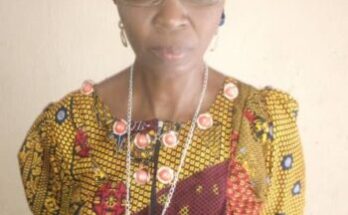Two permanent secretaries with Sokoto State government recently struck curiously discordant tunes over the rating of the state in the 2022 National Bureau of Statistics (NBS) Multi-dimensional Poverty Index. The NBS report rated Sokoto as the state with the highest number of poor people in Nigeria.
The NBS report tallies with the World Bank’s poverty rating of states in Nigeria where Sokoto with poverty rate of 87.7 per cent was rated as the state with the highest number of poor people in Nigeria.
Ironically, the NBS poverty rating drew flak from Arzika Bodinga, Sokoto State permanent secretary for budget and economic planning. Wondering how the NBS statisticians arrived at their conclusion, Bodinga drew the attention of NBS to the number of people trooping into the Othman dan Fodio University Teaching Hospital in Sokoto to donate blood on daily basis and argued that a state harbouring such alarmingly high number of the poor as recorded by NBS cannot have that number of people donating blood.
He also asked the NBS statisticians to furnish him with the number of people dropping dead on the streets of the cities in the state as a result of hunger.
Interestingly, Aisha Dantsoho, the permanent secretary in the ministry of women and children affairs was rather munificent in her reaction to the NBS poverty rating. She called for immediate action to reverse the rampaging poverty.
Many are worried about Bodinga’s reaction to the NBS poverty rating. As the technocrat in charge of budget and economic planning, the permanent secretary has access to the hundreds of billions of naira the state government earmarks for its services annually.
That may make him wonder how a state with such a mountain of cash should in the World Bank poverty rating have nine out of every 10 people in the state living in abject poverty.
The truth is that the World Bank and NBS cannot all be fabricating figures about Sokoto.
The World Bank and NBS are telling the gospel truth. If anyone has to re-examine his position on the raging poverty in Sokoto State, it is the state government. Poverty is written on the faces of nine out of every 10 persons walking the streets of the state.
The truth of the matter is that Bodinga is light years away from the reality on the ground. The opulent lifestyle of top government officials like him is partially responsible for the alarming poverty rate in Sokoto State. The cost of governance in the state is atrociously high. That leaves practically nothing to invest in decaying infrastructure for job creation.
Bodinga’s analogy of the number of people in the state trooping to donate blood in the teaching hospital as evidence of low poverty rate is a monstrous caricature of the truth. He did not supply the number of people trooping in to donate blood in the teaching Hospital. However, the number of blood donors in a community is hardly a factor in determining poverty rate. The truth is that some poor people are naturally healthier than the rich and could therefore donate blood even in the penury.
Besides, most of the people dying from poverty-induced diseases are dying silently in their homes. They are too weak to come out and die in the streets for Bodinga to count. In a state where data gathering is deliberately relegated to the back burner, Sokoto State government does not even know how many people die naturally on daily basis. It is therefore not possible to tell the world how many die of poverty-induced diseases.
The cheering news is that Sokoto State is blessed with people like Hajiya Aisha Dantsoho who would rather find solutions to the man-made poverty than spend time and energy contesting facts grounded on indubitable empirical evidence.
The NBS Multi-dimensional Poverty Index for 2022 is a sad reminder of the fact that Nigeria’s fight against poverty ended in 2015. Poverty had escalated since then. It escalated to a point that Nigeria replaced India as the world’s headquarters of poverty.
The report shows that 63 per cent or 133 million Nigerians toil below poverty line. Northern Nigeria has a commanding lead in the poverty conundrum.
The NBS report shows that the north harbours 86 million poor people while the south trails with 47 million. From all indications, Nigeria’s overwhelming poverty rate is not the consequence of dearth of resources.
It is more of the skewed income distribution system, uninhibited corruption, alarmingly high illiteracy rate and poor management of resources. Nigeria’s per capita income is almost twice that of India. With a population of 1.3 billion, India is the world’s second most populous country.
Yet its income distribution system has lifted millions out of poverty and allowed Nigeria to replace it as the country with the highest number of poor people in the world.
Nigeria’s fight against poverty is more of lip service. The federal government promised to lift 100 million people out of poverty by 2030. Ironically, it has pushed more than 30 million below poverty line in the last four years since Nigeria toppled India as the world’s headquarters of poverty.
If poverty rises at the current rate, by 2030 Nigeria may have well over 200 million people below poverty line. The solution to the problem lies in thinking along the line of Aisha Dantsoho rather than that of Arzika Bodinga.
Like Bodinga, the federal government has a penchant for contesting the World Bank poverty rating and concluding that things are not as bad as the picture painted by the men in Washington DC.
The truth is that a country with 133 million people languishing in abject poverty in a population of 216 million is a fertile ground for the recruitment of kidnappers, armed robbers and sundry terrorists.
That explains why Nigeria lost the war against insecurity. There are just too many people willing to join the growing ranks of bandits because crime pays where abject poverty stares one in the face.




